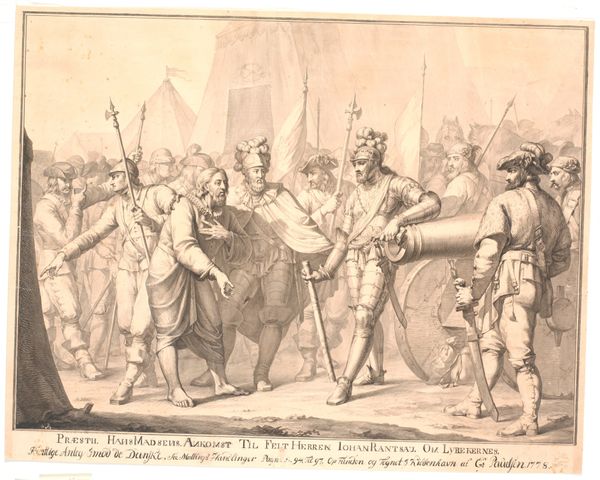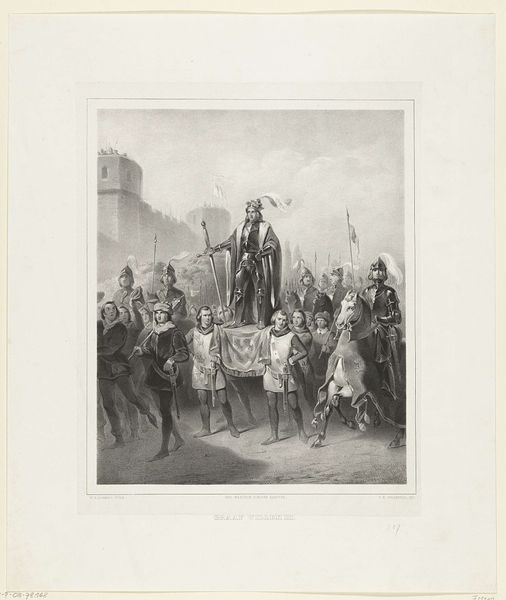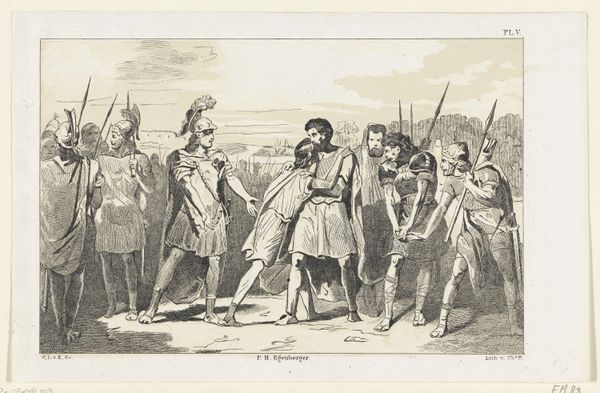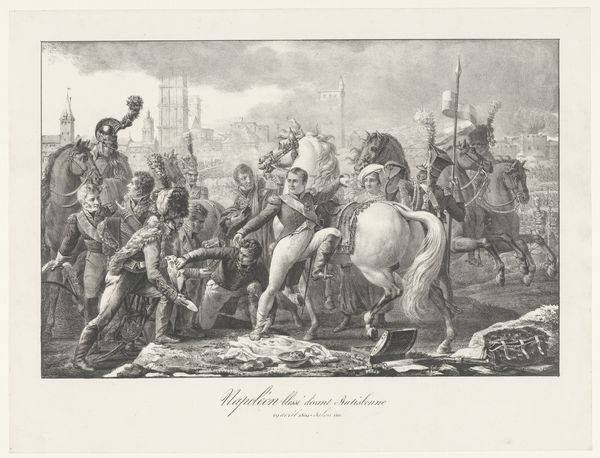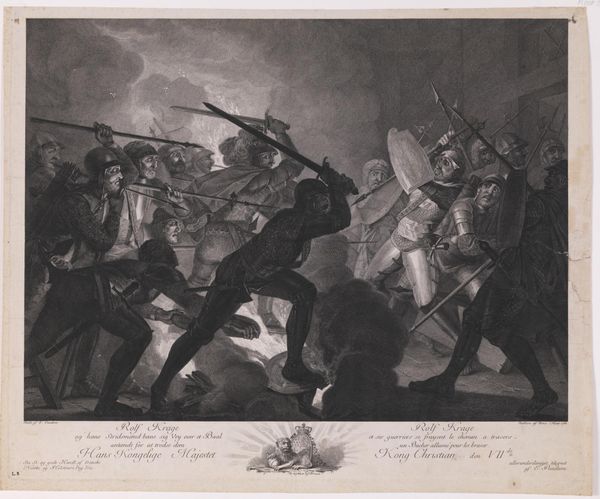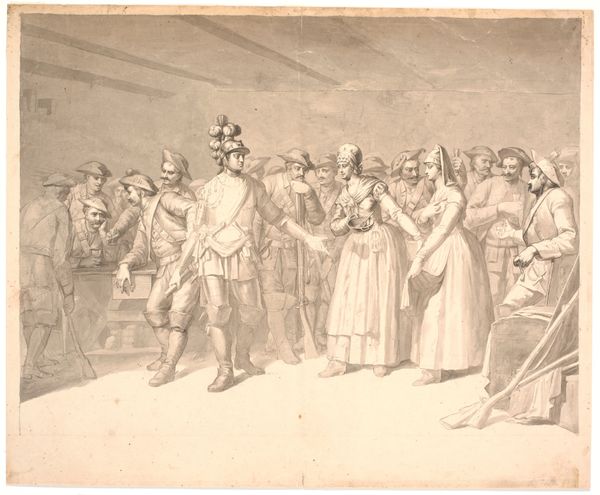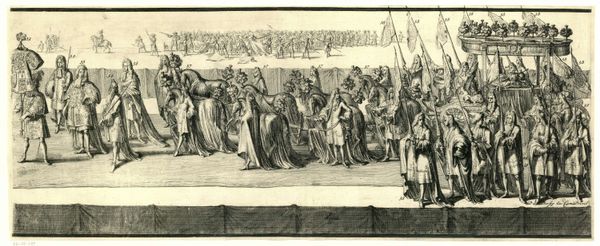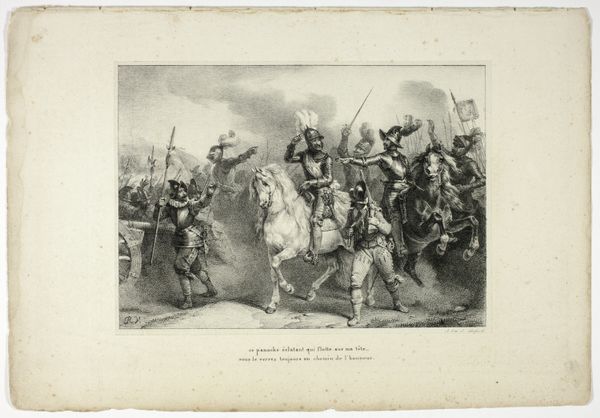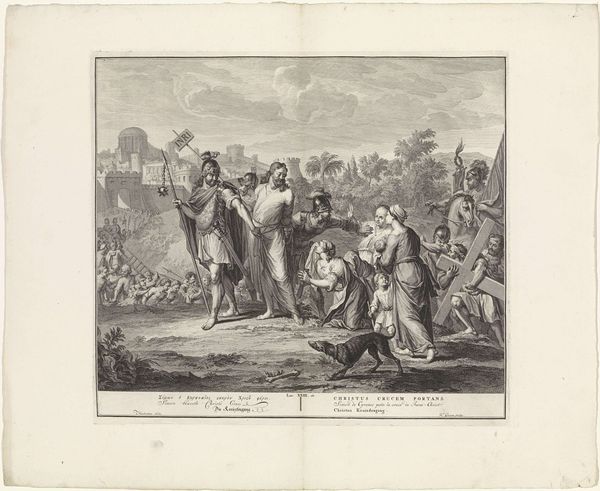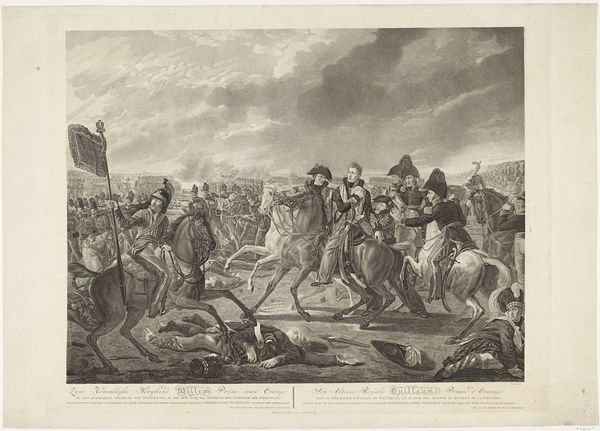
Hertog Arnold van Gelre gedwongen afstand te doen van zijn rechten, 1465 1853 - 1861
0:00
0:00
Dimensions: height 165 mm, width 232 mm
Copyright: Rijks Museum: Open Domain
This lithograph by Jan van der Veen depicts Duke Arnold of Guelders being forced to abdicate in 1465. It reduces a complex political event to a melodramatic scene of forced submission. Made in the Netherlands around the mid-19th century, this image reflects the period’s interest in national history and the rise of historical painting. We see a theatrical composition: Arnold kneels, head bowed, as his son Adolph looms over him, backed by armed men. Such images reinforced ideas about national identity, but also about power and authority. The artist makes use of visual codes like costume and setting to lend authenticity to the scene. The Rijksmuseum, where this print is housed, played a key role in shaping Dutch national identity. Its collection reflects the values and interests of the Dutch state and its citizens. To understand this print, we need to consider the social and political context in which it was made, using resources like historical archives, museum collections, and art historical scholarship. The meaning of art is always contingent on its historical context, and it is the historian’s role to illuminate these connections.
Comments
No comments
Be the first to comment and join the conversation on the ultimate creative platform.
